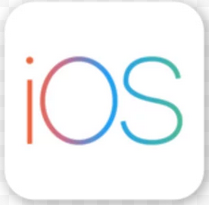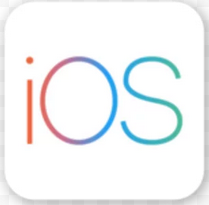Connecting to Liberty's Wi-Fi Networks (Account Access)
Ready to Connect to Liberty's Wireless Network? Welcome to eduroam!
Liberty University has recently partnered with eduroam, a worldwide roaming wireless service developed for and by the international research and education community. Eduroam offers students, researchers, and staff secure wireless connectivity at more than 2,500 locations in the US and more than 33,000 connection points worldwide. This partnership ensures that Liberty University can offer a fast, flexible, and secure internet experience for our students, faculty, staff, and eduroam guests. For more information on eduroam, please visit the eduroam website.
Table of Contents
Requirements & Eligibility
The eduroam wireless service is available to on-campus students, staff, faculty, and eduroam partner members and will work with a variety of wireless devices. There are two types of wireless connections - onboarded devices and registered devices. Computers and mobile handheld devices will be onboarded directly to the eduroam network. Additional devices, such as smart TVs, game systems, and streaming devices will need to be registered before creating a connection to the network. Below is a non-inclusive list of the currently supported devices:
- Supported Devices for Onboarding:
- Windows computers
- Windows 10
- Windows 11
- MacBook/iMac
- MacOS Catalina
- MacOS Big Sur
- MacOS Ventura
- iPads
- iPhones
- Android (Tablets/Phones)
- Windows computers
- Supported Devices for Registration:
- Smart TVs
- Game systems
- Xbox One
- Xbox Series
- Playstation 4 (5GHz models only - i.e. Pro, Slim)
- Playstation 5
- Smart Speakers/Streaming Devices
- Google Home
- Amazon Echo
- Roku
- Firestick
- Chromecast
Note: All devices must be compatible with the Wireless Adapter Standards listed below to be eligible for Liberty's wireless network/eduroam. While Liberty University strives to offer the best wireless experience possible, please note that some devices may not be compatible or may not work as expected on the Liberty wireless network. Please view the Unsupported Devices section for further information regarding known incompatibilities.
Students/Staff/Faculty
All current students, staff, and faculty may utilize the eduroam wireless connectivity service by installing the Secure W2 app and using their Liberty credentials when prompted. The user and device will need to be on-campus to connect.
Guest Access
Guests that do not have a Liberty or eduroam account may register for guest network access by connecting to our Liberty-Guest wireless network. For more information on accessing the Liberty-Guest network, please reference this knowledge article.
Availability
All residential halls, dorms, and academic spaces feature 100% wireless coverage. Wireless coverage is also generally available in most outdoor campus sites, but service is not guaranteed at all locations. We are evaluating further coverage and strive to provide the best wireless coverage for our students, staff, faculty, and guests. More details about our wireless network system may be found at: https://www.liberty.edu/information-services/products/wireless-network/.
Location list
- Main Campus
- East Campus
- North Campus (Mayflower Drive)
- Most Liberty Mountain Facilities (Snowflex, Intramural Complex, Indoor Track & Field Complex)
Connecting Your Device
Onboarding is the process of connecting a PC or mobile device to the Liberty wireless network. Connecting to the Liberty wireless/eduroam network requires a wireless profile and certificate to securely connect the device. In most cases, this setup is as easy as connecting to our wireless onboarding network, running an app to configure the certificate/profile, and then using your Liberty credentials to securely connect. The steps below will assist you in onboarding your device:
Personal Computers
 Onboarding - Windows
Onboarding - Windows
Note: The following screenshots were made using a Windows 10 device. Windows 11 will follow the same general steps, but the screenshots may differ from your device. Please note that Windows 8 and earlier versions are not supported.
-
Click the wireless icon in the bottom right-hand corner of your computer screen to open your available wireless networks. Select the Liberty-Wireless option and then connect to this network. If you do not see a list of networks, ensure that WiFi is enabled and that the device is not in Airplane mode. If you are still not seeing a list of networks, please refer to Microsoft's guide on fixing wi-fi connection issues in Windows.
-
In a web browser, type the following in the web address bar at the top of the browser: connect.liberty.edu, and then hit the Enter key.
Note: The Liberty-Wireless network is for onboarding purposes and will not connect with outside websites/resources.
-
The following screen will appear. Verify that the correct version of Windows is listed, review the eduroam Acceptable Use Policy, and click JoinNow to download the setup application.
-
Save and run the file to begin setup. This process will vary based on the browser:
-
Microsoft Edge: The downloads panel will open in the top-right - click on eduroam.exe or Open file to start the setup.
-
Google Chrome: A button will appear for eduroam.exe in the bottom-left corner of the browser window. Click the button to run the program.
-
Mozilla Firefox: Click the Save File button, then click on the downward pointing arrow button at the top-right of the browser window to show downloads. Click on the listing for eduroam.exe to open the file.
Opening the eduroam configuration app using the Firefox browser. -
-
When prompted to allow the application to make changes to your computer, choose Yes.
-
The eduroam app will appear. Click on Next to start the setup.
-
A browser window/tab will open requesting your login. Sign in with your Liberty email address and password to continue the setup.
-
The application will take a few moments to establish a secure connection and will provide a confirmation message once you have connected to the eduroam network. You may now close the setup app as your device is connected!
 Onboarding - Mac
Onboarding - Mac
Note: Your screen appearance may vary based on the MacOS version. Also, please note that newer versions of MacOS may require additional steps - these are marked where required.
-
Select the wireless antenna icon on the top-right corner of the screen to show the list of available wireless networks. Click on Liberty-Wireless to connect.
-
Open a web browser and type in the following web address: https://connect.liberty.edu.
-
The following page will appear. Verify that the version of MacOS is correct and select JoinNow.
-
Follow the instructions to mount and run the application.
-
A security dialog will appear to request confirmation. Click Open.
-
When the following screen is displayed, click on Next to open a browser window for sign-in.
Note: A dialog box may appear to confirm whether eduroam is permitted to access the browser. If this occurs, click OK to continue setup.
-
Sign in with the Liberty email address and password to continue with registration.
-
The app will download the security certificate needed for network access. The installation of this certificate will require the system login to proceed.
-
Next, the app will need to set up a configuration profile. Click on Next.
-
Big Sur/Ventura users: Open the Apple menu -> System Settings, then click on Privacy and Security. On the right, click on Profiles, which may require scrolling down the list. Double-click the Liberty University eduroam profile. If you are unsure of which version of MacOS you are using, please reference these steps from Apple's support site.
-
The profile information will be displayed. Click on Install... to continue setup.
-
At the profile confirmation screen, click on Install. Enter your system credentials and press OK to continue the installation.
-
A keychain request for SecureW2 JoinNow will appear. Enter the keychain password and choose Always Allow to complete this step.
- Click on Done to finalize the setup. Your device is now connected!
Mobile Devices
 Onboarding - iOS (iPhone, iPad)
Onboarding - iOS (iPhone, iPad)
Note: Your screens may appear different than the ones shown below, depending on your iOS version. Please refer to the iOS support site for assistance if you are unable to locate a setting.
-
Open the Settings app from the Home screen.
-
Tap on Wi-Fi.
-
Connect the device to the Liberty-Wireless network.
- In a web browser, open the following website: connect.liberty.edu.
Note: The Liberty-Wireless network is designed solely for onboarding and will not connect with any other websites.
-
The following page will appear. Select Sign In to start the onboarding process.
-
The default browser will open and display the Liberty University login screen. Sign in with your Liberty email address and password.
-
On the following screen, tap JoinNow to download the wireless profile.
-
A confirmation prompt will request permission to download the profile. Tap Allow, and then select Close once the Profile Downloaded message appears.
-
Open the Settings App, tap Profile Downloaded, then tap Install. Your phone may require your passcode to continue.
-
A certificate warning message will appear - tap Install to complete the profile installation.
-
The profile confirmation screen will open. Tap on Done in the top-right.
-
Open your phone's Wi-Fi connection list and tap on eduroam to complete the connection. You should now be connected!
 Onboarding - Android (Phones, Tablets)
Onboarding - Android (Phones, Tablets)
Note: Your screens/navigation may slightly differ from the steps listed below, depending on your version of Android. Please refer to the Android support site if you are having trouble locating a setting.
-
Open your phone's Settings app. This is usually done by swiping down from the top of the home screen.
- Navigate to Network & Internet -> Internet -> Wi-Fi. Some Android users may find the option for Wi-Fi on the main Settings menu.
-
Tap on the Liberty-Wireless network listing and connect to the network.
- Open a web browser and open the site: connect.liberty.edu.
-
The following screen should appear. Select JoinNow.
-
The Google Play store will open with a prompt to download the SecureW2 JoinNow app. Tap on Install.
-
Once the app has finished installation, tap on Open. The browser should open a Liberty University sign-in page. If the login page does not appear, switch back to the original browser and select JoinNow again from the connect.liberty.edu website. Log in with your Liberty email address and password to continue.
-
When prompted, tap the Continue button.
-
Choose Wi-Fi certificate from the following screen, then press OK.
-
Review the instructions and then select Next.
-
Tap on Save to save the network profile.
-
Use the Go to Wi-Fi Settings button when prompted.
-
Tap on eduroam to complete the onboarding process. You are now connected!
Additional Devices
Many other types of wireless-ready devices are able to be connected to Liberty's wireless network, including Smart TVs, game systems, and streaming devices. Please note that this process is different than the process to onboard computers or mobile devices. Additional devices must first be registered before connecting these devices to the Liberty-Wireless network.
Note: Registered devices are connected through an alternate network environment, which is not the same connection used by computers/mobile devices. In some cases, this may limit the functionality of the device.
The following steps may be used to register a compatible device on the Liberty University/eduroam wireless network:
-
With a device that has already been onboarded to the eduroam connection, navigate to https://onboard.liberty.edu and click on Manage Another Device.
-
Enter your Liberty credentials at the login prompt and select Login.
-
Click Add on the following page.
-
Enter the following information:
- The Wireless MAC Address of your device. This is normally found in either the Settings/Network menu of the device or within the mobile app used to set up the device.
Note: Devices that have a network port in addition to a wireless adapter may have more than one MAC address. It is important to use the one listed as the Wireless MAC address. If you are unable to locate the wireless MAC Address for your device, please refer to the manufacturer's instructions for your make/model.
-
A Device Name. Please refrain from using punctuation, such as apostrophes and hyphens, as this may cause the device to fail to connect.
-
Check the box certifying that you own this device, and then click on ADD DEVICE.
- The Wireless MAC Address of your device. This is normally found in either the Settings/Network menu of the device or within the mobile app used to set up the device.
- Switch to the device and connect it to the Liberty-Wireless network. The device should now be connected!
Note: Some devices will require a restart to complete the connection. If your device does not connect at first, please unplug it and plug it back in to reset the connection.
Manual Wireless Profile Installation
Advanced users may download the device and CA certificates for manually onboarding a device to eduroam. Please use the steps below to manually onboard a device:
Note: OS-specific configuration steps are the responsibility of the user; Liberty University is unable to assist with manual configurations.
-
Connect to the Liberty-Wireless network.
-
In a web browser, open https://connect.liberty.edu.
-
Next to "Select your device:" at the bottom of the window, change the option to User-Defined and then click Sign In.
-
A browser window should appear - log in with your Liberty email address and password.
-
A Create Certificate window should display. Enter a description (optional) and select Create. Please avoid punctuation/special characters in the description.
-
Enter a secure encryption passphrase of at least 6 mixed characters and select Submit.
-
Click the generated link to download the encrypted device certificate, then click on Next.
-
The required network settings and CA certificate information will be displayed. This concludes the steps for manual device onboarding.
Wireless Profile Removal
Removing the Wireless Configuration Profile is a useful troubleshooting step, but may also be completed when a user will no longer require the use of the eduroam wireless connection. Users that wish to remove the eduroam configuration profile and certificate for a device can use the following steps:
 Profile Removal - Windows
Profile Removal - Windows
Wireless profile removal:
- Press the Windows Key. This is the button on the bottom-left of the keyboard that has the Window panels icon
.
-
Type CMD to bring up the app options, then click on Run as administrator.
-
Enter the command: netsh wlan delete profile name="eduroam"
- Press Enter. The profile will now be removed.
Wireless certificate removal:
-
Press the Windows Key. This is the button on the bottom-left of the keyboard that has the Window panels icon
.
-
Type Manage user certificates and press Enter.
-
On the left panel, navigate to Certificates - Current User -> Personal -> Certificates. Select the certificate on the right-side panel that is Issued By Personal CA, and press the Delete key on the keyboard to remove the certificate.
 Profile Removal - MacOS
Profile Removal - MacOS
Wireless profile removal:
-
Open the Apple Menu in the upper-left corner of the screen and then click System Preferences/System Settings.
- In the Search box on the left, type Profiles.
-
Underneath the User category on the right, select Liberty University eduroam.
-
Press the Delete key on the keyboard, then click on Remove to confirm.
-
Enter the system credentials to allow the device to make the required changes.
Wireless certificate removal:
- Select the magnifying glass in the top-right of the menu bar to open Spotlight Search. Type Keychain Access in the search box and press Enter.
-
Under the login keychain (on the left), find the certificate with your @liberty.edu email address. Make sure you are under the Certificates tab at the top.
-
Verify the certificate is correct by right-clicking this listing and choosing Get Info. The eduroam certificate to be removed is issued by: Personal CA.
-
Once confirmed, right-click the certificate and then select the 'Delete' menu item. Confirm by clicking Delete, then enter the system credentials to remove the certificate.
 Profile Removal - iOS (iPhone, iPad)
Profile Removal - iOS (iPhone, iPad)
-
Open the Settings app on the device and select General.
-
Select VPN & Device Management.
-
Select Liberty University eduroam MobileConfig profile.
-
Tap on Remove Profile at the bottom of the page.
-
A prompt will appear for the device passcode. Enter these credentials and select Remove to complete the profile removal.
 Profile Removal - Android
Profile Removal - Android
-
Swipe down from the top of the home screen to open the Control Panel. Tap Internet in the top-left corner.
-
Tap the Gear icon next to eduroam.
-
Tap Forget to remove the network profile.
-
On the home screen(s), find the JoinNow app. Press and hold the icon to view the App menu. Tap App Info.
-
Tap Uninstall and then press OK to confirm.
-
Tap on Search and open Settings. Scroll down and open Security & Privacy.
-
Scroll down to More security settings and open it.
-
Tap Encryption & credentials. On the following screen, tap User Credentials.
-
Remove all credentials listed as Installed for Wi-Fi. This is done by tapping on each item and choosing Uninstall.
Troubleshooting
General Troubleshooting
If you are having trouble connecting your device, or if your device will no longer connect to the eduroam network, please try the following:
- Onboarded devices (computers, smartphones): Remove the wireless profile, and then attempt to onboard the device again. If you are still unable to connect, please ensure your device is supported and meets the minimum hardware requirements.
- Registered devices (smart TVs, game systems, and other wireless-enabled electronics): Delete the device registration and then create a new registration profile for the device. Also try unplugging the device and plugging it back in to attempt to restart the connection.
Note: Resetting your Liberty account password may interrupt your wireless connection. Re-onboarding the device with the updated credentials will resolve this issue.
Network Drivers
Network devices require special software to work correctly - these are known as 'drivers'. Having up-to-date network drivers may help resolve network and connection issues. To get the latest drivers for your network card, you'll need to visit the computer manufacturer's website (i.e., www.dell.com) and look for Support/Drivers & Downloads. Ensure that the network drivers being downloaded are for the correct make/model of your system.
Network Optimization Settings (Windows Only)
Windows allows the user to fine-tune the network settings which may help resolve and/or improve network connection quality and performance. To adjust these settings, first:
-
Open Device Manager by pressing the Windows + X keys, then choose Device Manager from the menu.
-
Scroll down to Network Adapters and click on the expansion caret to show the list of network devices.
-
Right-click on the network device used for the internet connection and then choose Properties.
-
Switch to the Advanced tab and then update the following settings:
- 5GHz Network Preference
Most Wi-Fi connections operate on one of two frequency bands: 2.4 GHz and 5 GHz. While some devices may be able to connect using the 2.4 GHz band, there is potential for reduced speeds and interference with other devices. For this reason, devices should be set to prioritize using the 5 GHz connection when possible. This may be done by updating the Preferred Band setting.
- U-APSD, WMM-PS
Some devices may have a setting listed for U-APSD support. This may also be listed as WMM-Power Save or WMM-PS. This is a power-saving feature that may result in connection/data transmission delays. For the best network performance, this setting should be Disabled for the device.
- Roaming Aggressiveness
Roaming aggressiveness controls how often the wireless adapter will check for alternate connection points with a stronger signal. To reduce the frequency of network connection switching (which will affect performance), this should be set to Medium.
- 5GHz Network Preference
Hardware requirements
While Liberty strives to offer wireless service to a wide variety of devices, some devices will either not connect or function properly when connected. Legacy devices are commonly affected as their standards may not meet the current level of security requirements for a Liberty wireless connection. Most modern devices will not experience connection issues.
Unsupported Devices
- Wireless Printers
- Sonos Devices
- Playstation 3 and early-generation Playstation 4 (generations 1-3)
- Xbox 360 consoles
- TP-Link Smart Plugs
- Nintendo DS through DSi-XL models
- Windows 8 and earlier versions
Wireless Adapter Standards
Minimum
- IEEE 802.11ac WLAN Network Adapter
- 2.4 GHz/5GHz Dual Band
- 2x2 300 Mbps (20/40/80/160MHz)
- WPA2-Enterprise Security
Recommended
- 3x3 1300 Mbps (20/40/80/160MHz)
Unsupported Adapters
- IEEE 802.11b/g/n WLAN NIC (2.4GHz only)
- 2.4GHz Single Band
- 1x1
- Adapters that do not support WPA2-Enterprise
Recommended Adapters
USB Adapters
- http://www.linksys.com/us/support-product?pid=01t80000003KBJAAA4
- http://www.netgear.com/home/products/networking/wifi-adapters/a6210.aspx#tab-techspecs
Desktop PCI-E Adapters
Editing Registered Devices
Users may update the MAC Address and/or Device Name for registered devices (i.e., TVs, game systems). This will only apply to devices that are registered and connected to the Liberty-Wireless network. Please use the following steps to update/delete a device profile.
-
Open https://onboard.liberty.edu from a device that is connected to eduroam. Click on Manage Another Device.
-
Enter your Liberty email address and password, then select Login.
-
To update the device profile, click on the Edit Device button, which looks like a pencil.
Note: To delete the device profile, click on the Delete Device button (looks like a trash bin) and click the Yes button to confirm the device registration deletion.
-
Update the MAC Address and/or Device Name as desired. Please avoid punctuation in the name, as this may cause the device to fail to connect. Check the certification box for I personally own this device, then click on UPDATE DEVICE to save the changes.
If you need further assistance with connecting your device, please contact the Liberty University IT HelpDesk at (866) 447-2869. You can also chat with us online at www.liberty.edu/hdchat